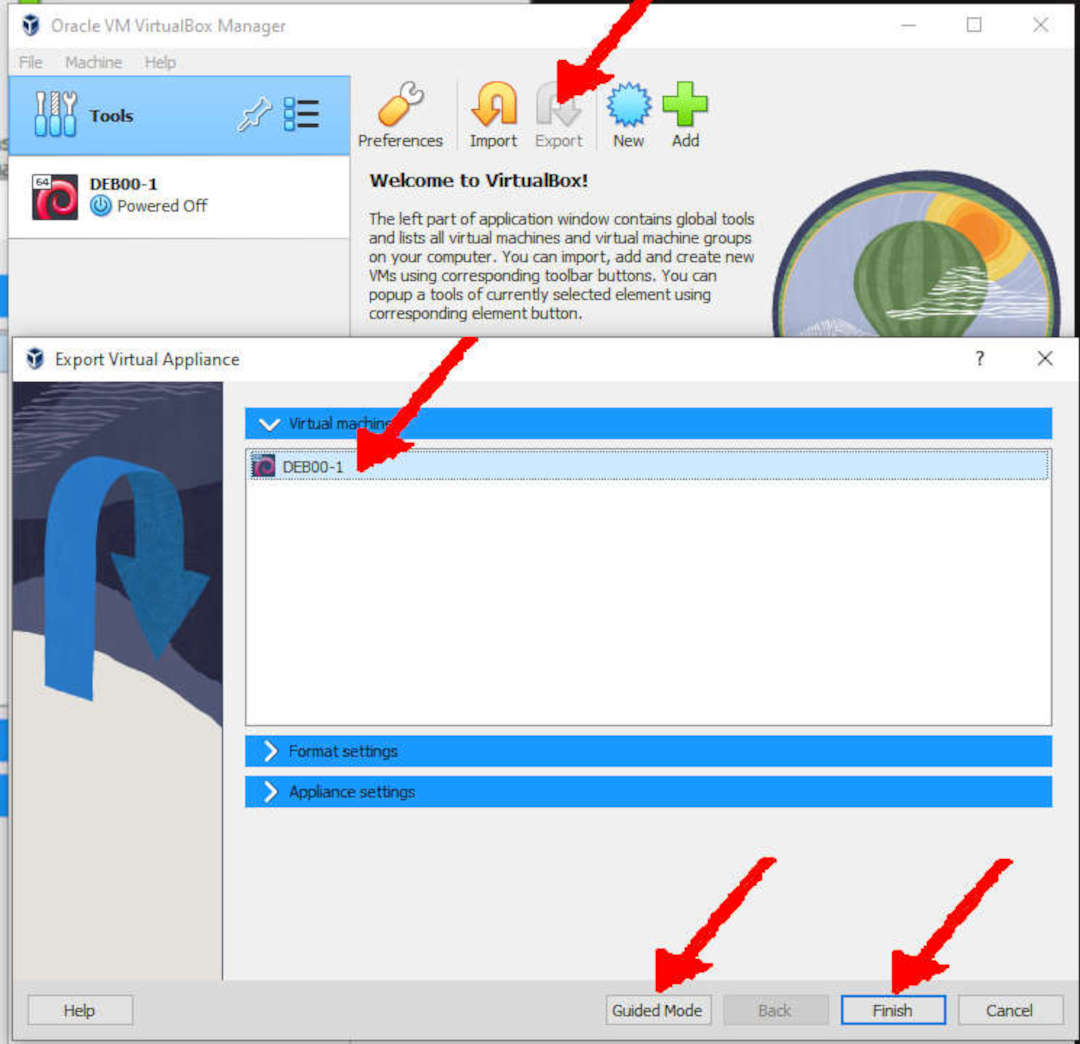
Table of Content
- Installing Debian Gnu/Linux
- Export OVA (DEB00-0)
- Rename DEB00-0 to DEB00-1
- Fine Tunning
- DONE
- Export OVA (DEB00-1)
Installing Debian Gnu/Linux
NOTE: When doing the installation, most of the options are DEFAULT. Possible different answers will be marked with “ARROWS.” If you are in “Guided Mode,” switch to “Expert Mode.”
These are just examples, the whole examples, and nothing but examples. So please help me, GNU/Linux! You might select other options based on your faith and religion (i.e., kepercayaan and keyakinan masing-masing).
- Name: DEB00-0
- Type: Linux
- Version: Debian (64 bit)
- Base Memory: 4096 MB
- Processors: 4
- HardDisk
- Size: 24 GB
- Type: VDI
Expect the Unexpected
- Sh*t sometimes happens!

Select: NEW
NOTE: When doing the installation, most of the options are DEFAULT. Possible different answers will be marked with “ARROWS.” If you are in “Guided Mode,” switch to “Expert Mode.”
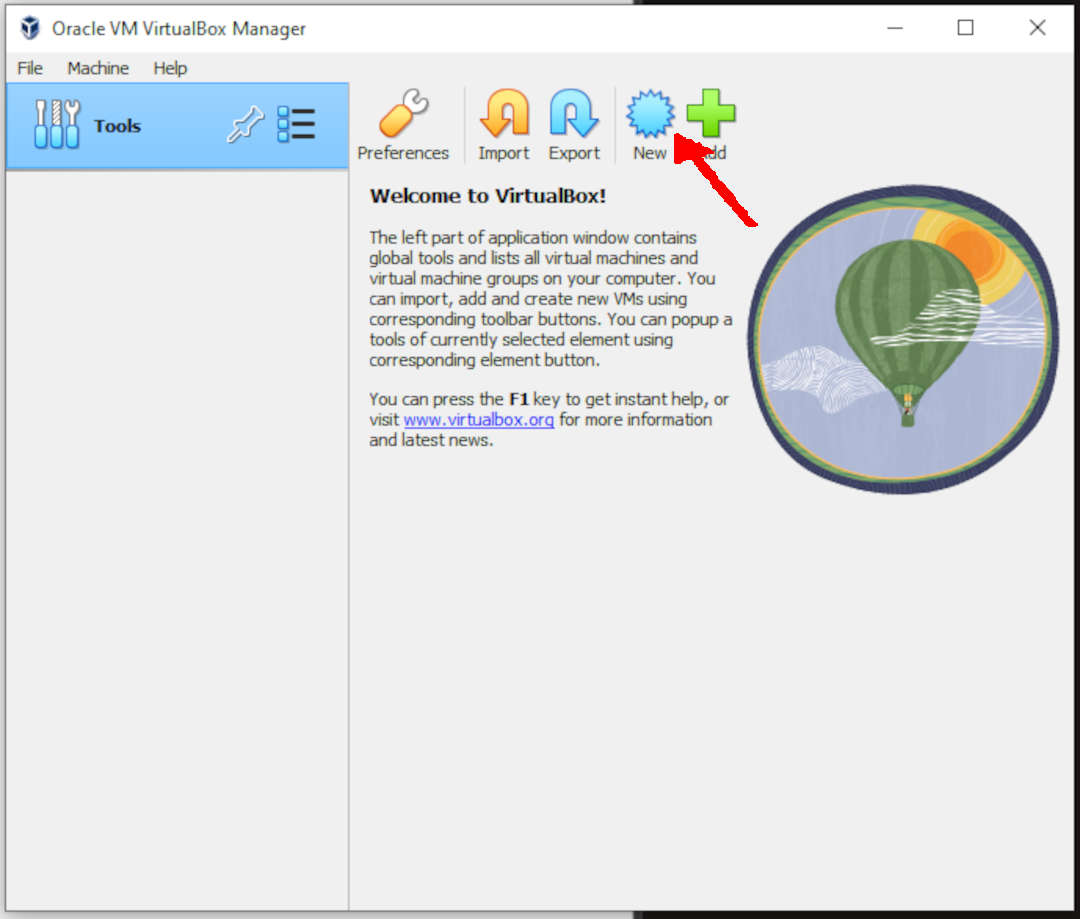
Virtual Machine Name and Operating Systems
NOTE: When doing the installation, most of the options are DEFAULT. Possible different answers will be marked with “ARROWS.” If you are in “Guided Mode,” switch to “Expert Mode.”
- Select: Expert Mode
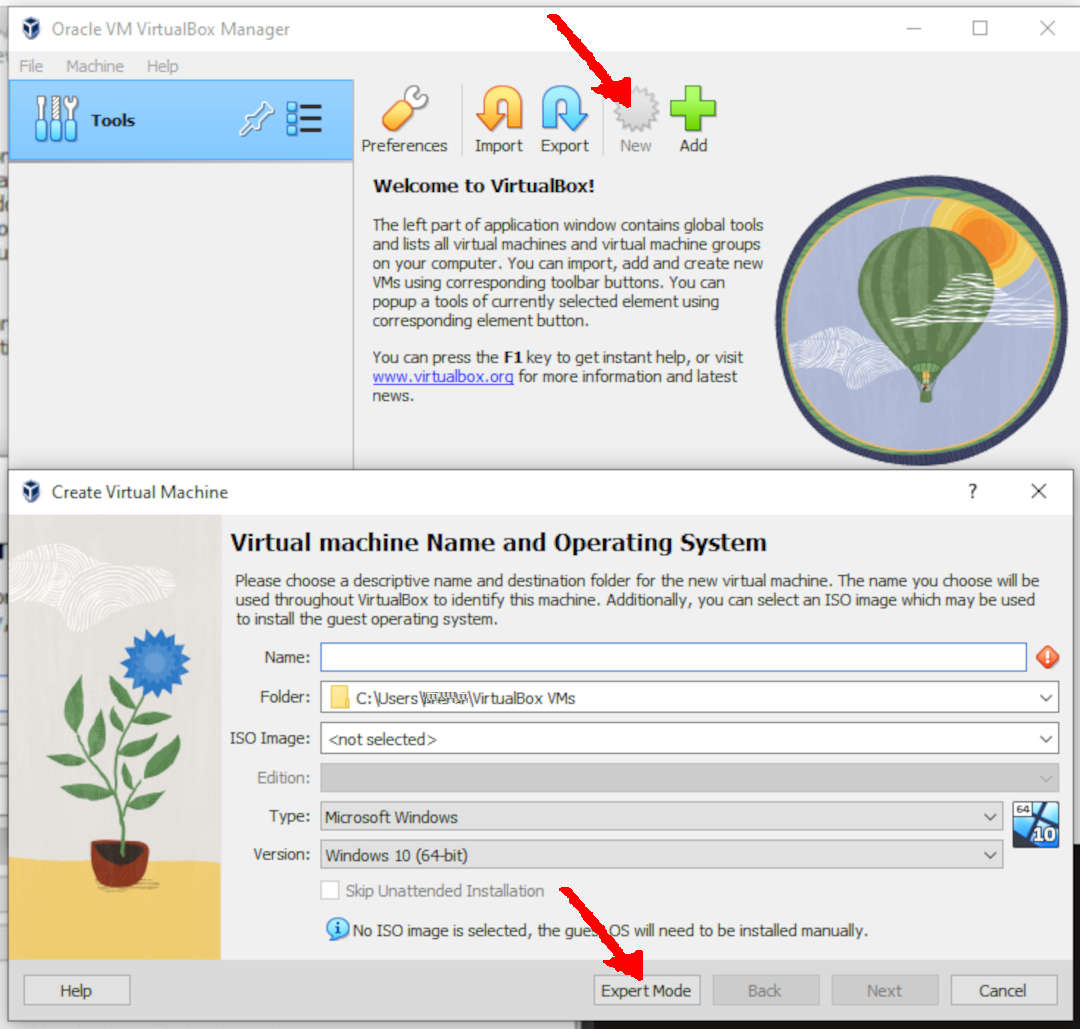
- Name: DEB00-0
- Type: Linux
- Version: Debian (64 bit)
- ATTN: If your Windows “C:” drive is almost full, consider to switch the “Folder” to drive “D:”.
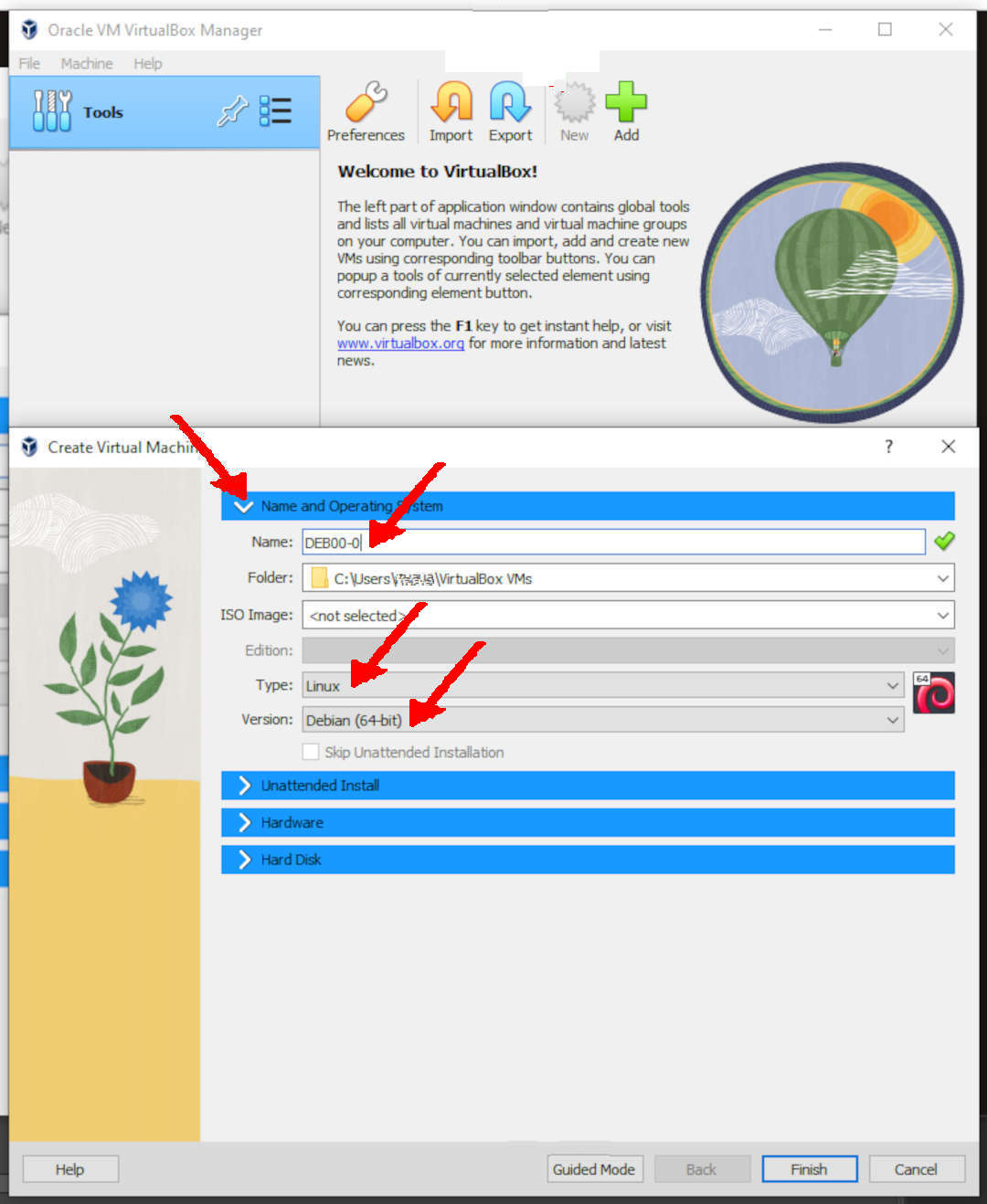
Hardware
NOTE: When doing the installation, most of the options are DEFAULT. Possible different answers will be marked with “ARROWS.” If you are in “Guided Mode,” switch to “Expert Mode.”
- Base Memory: 4096 MB
- “Make sure that you don’t cross the red line!”
- Processors: 4
- “Make sure that you don’t cross the red line!”

HardDisk
Do not worry about having a 24 GB empty disk! An empty disk does not occupy much space.
- Size: 24 GB
- Type: VDI
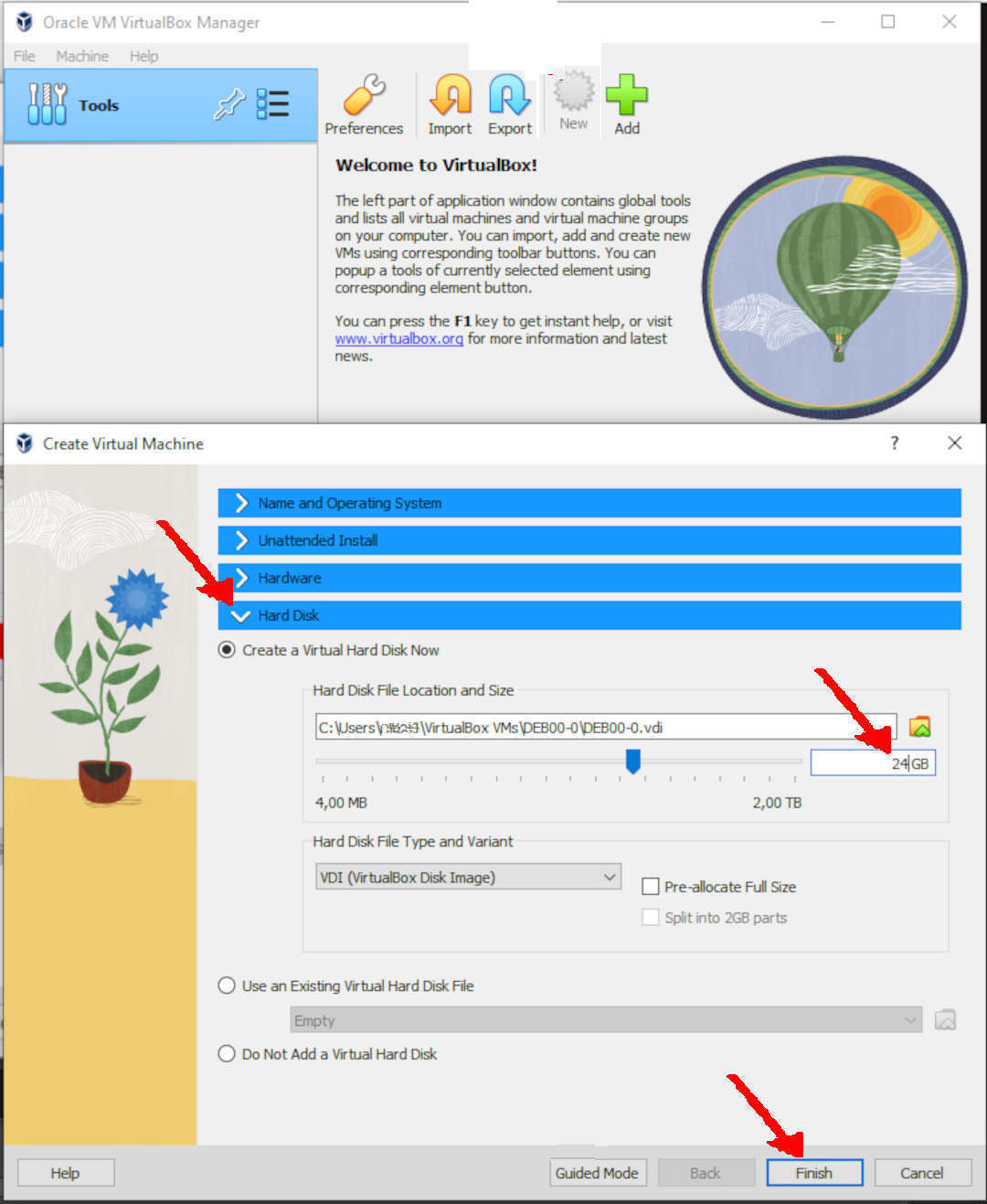
Export OVA: DEB00-0
- Select:
- Tools –> Export
- FINISH
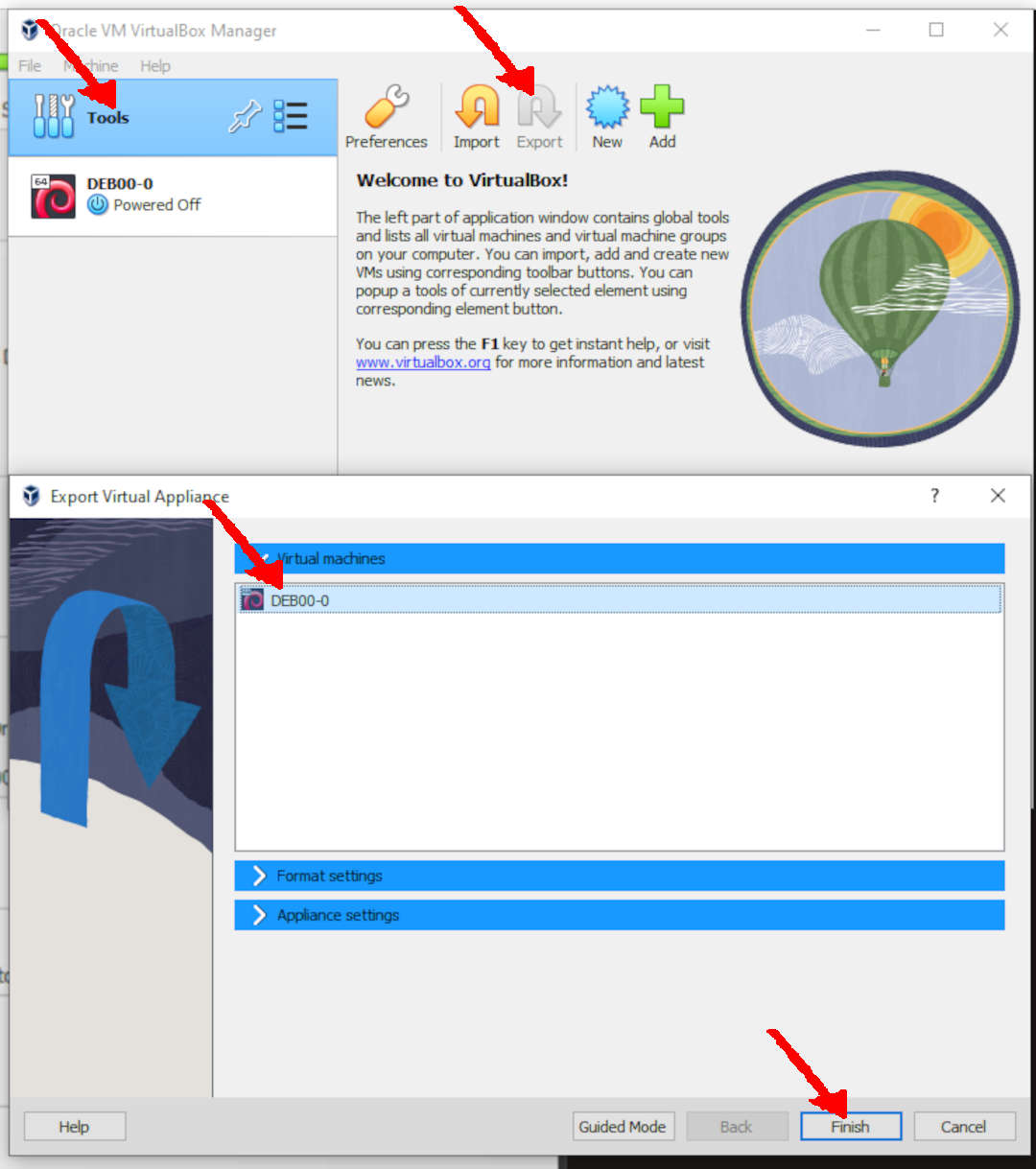
Rename DEB00-0 to DEB00-1
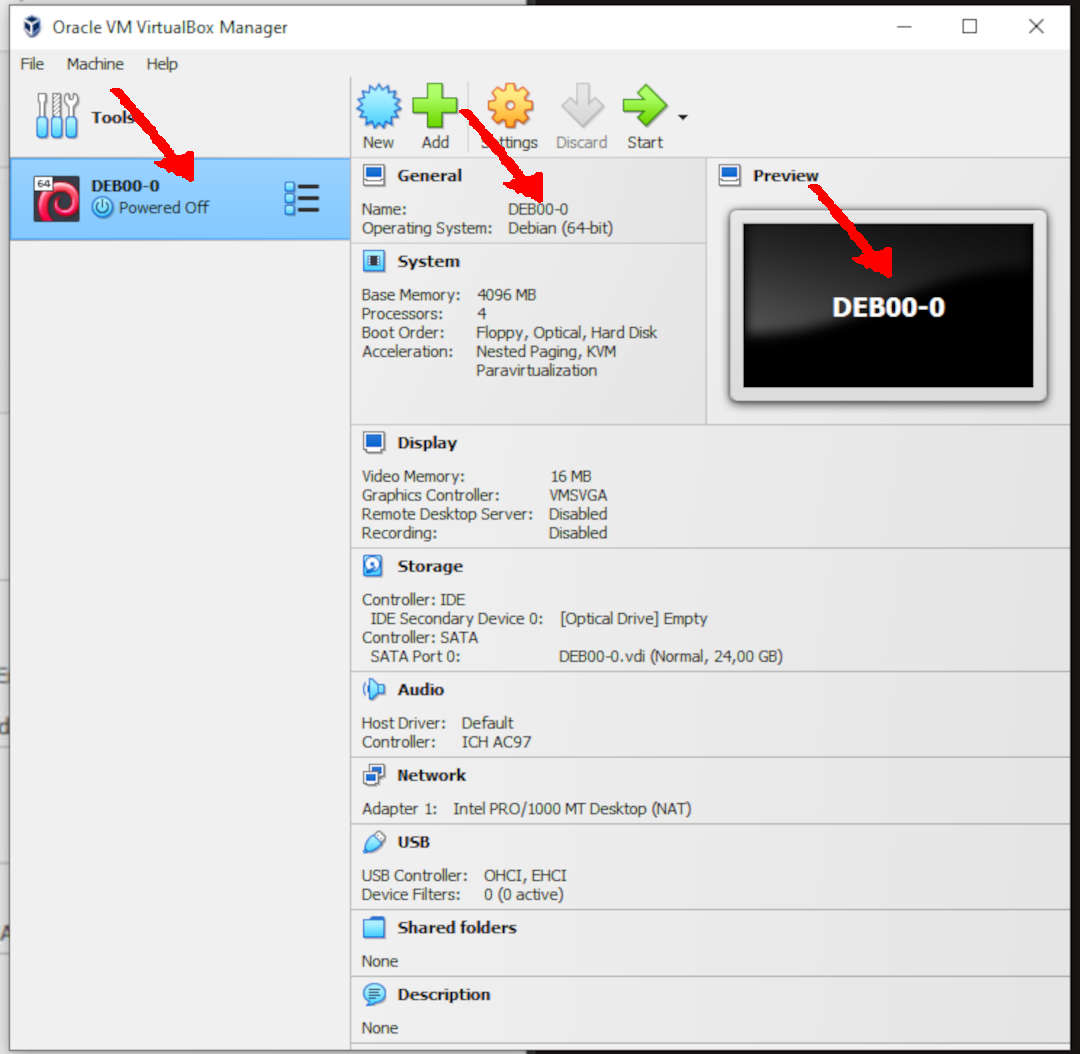
- In “General”, click “Name:DEB00-0”
- Set “Name:DEB00-1”
- OK
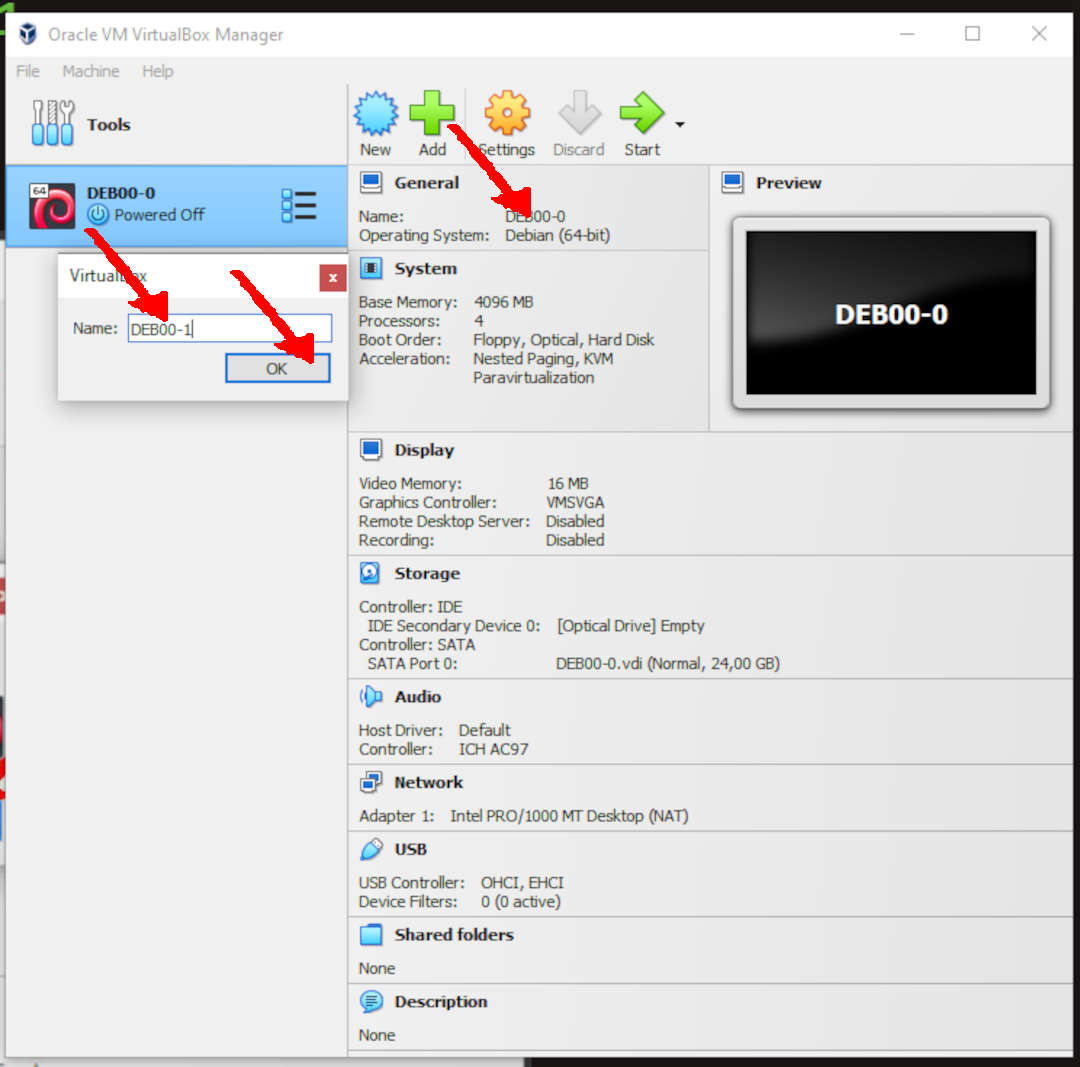
Fine Tunning

General: Basic
- Name: DEB00-1
- Type: Linux
- Version: Debian 12 Bookworm (64-bit)

General: Advanced
- Shared ClipBoard: Bi-directional
- Drag’n Drop: Bi-directional
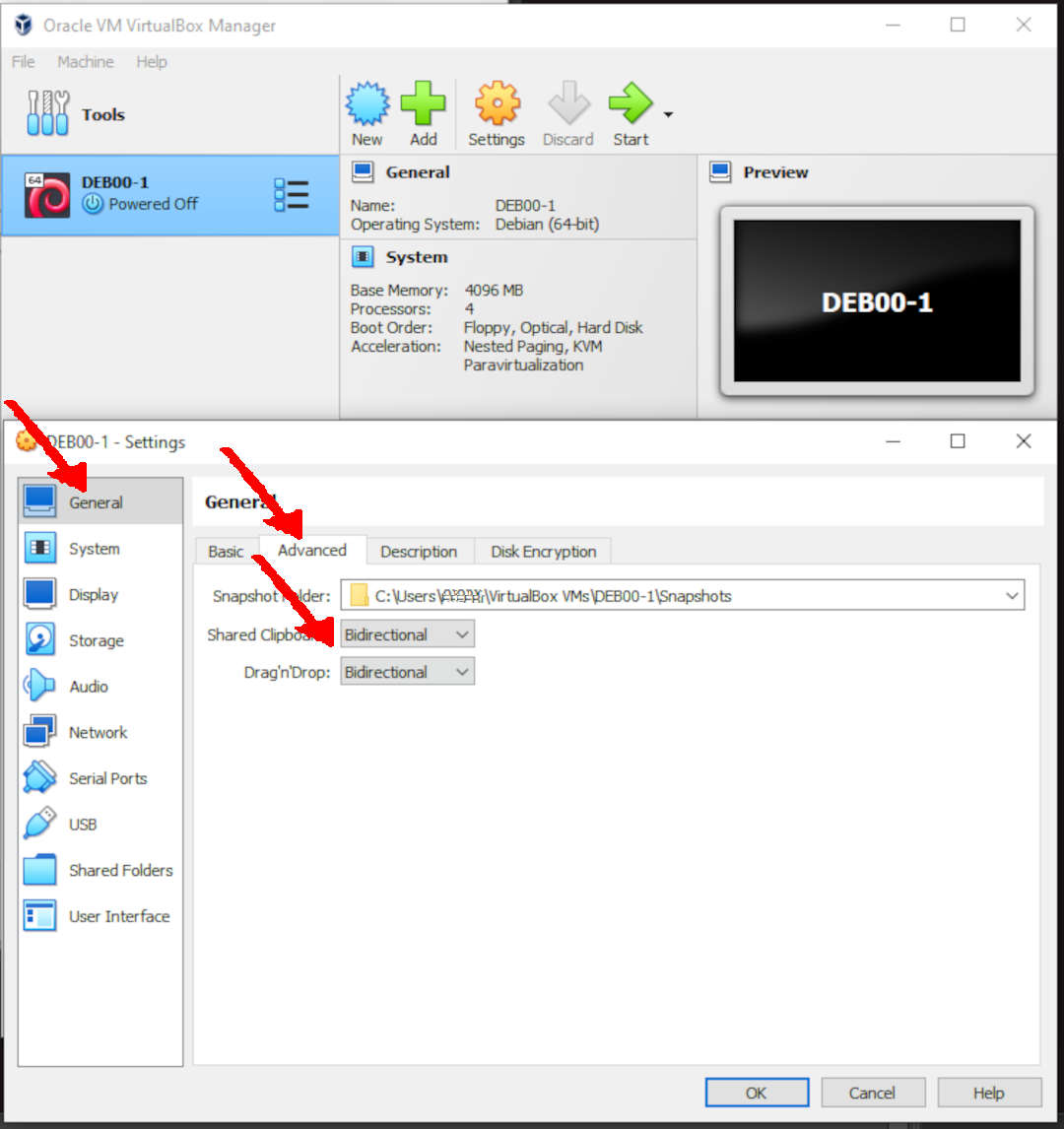
System: MotherBoard
- Base Memory: 4096 MB
- Boot Order:
- Optical
- HardDisk
- ChipSet: PIIX3
- TPM: None
- Pointing Device: USB Tablet
- Extended Feature:
- Enable I/O APIC
- Enable Hardware Clock in UTC Time

System: Processor
- Processors: 4
- Execution Caps: 100%
- Extended Feature:
- Enable PAE/NX
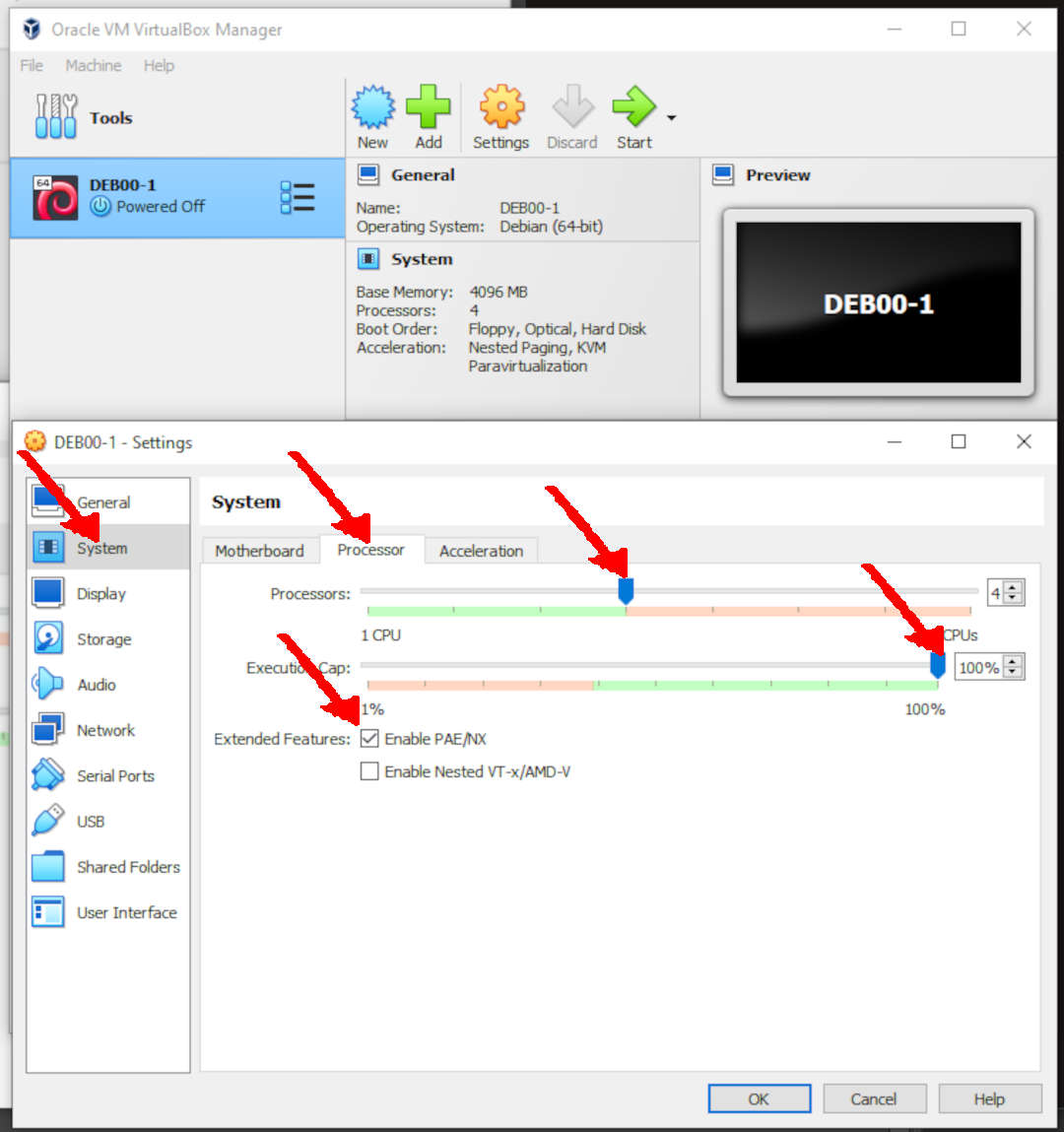
System: Acceleration
- Paravirtualization Interface: Default
- Hardware Virtualization: Enable Nesting Page
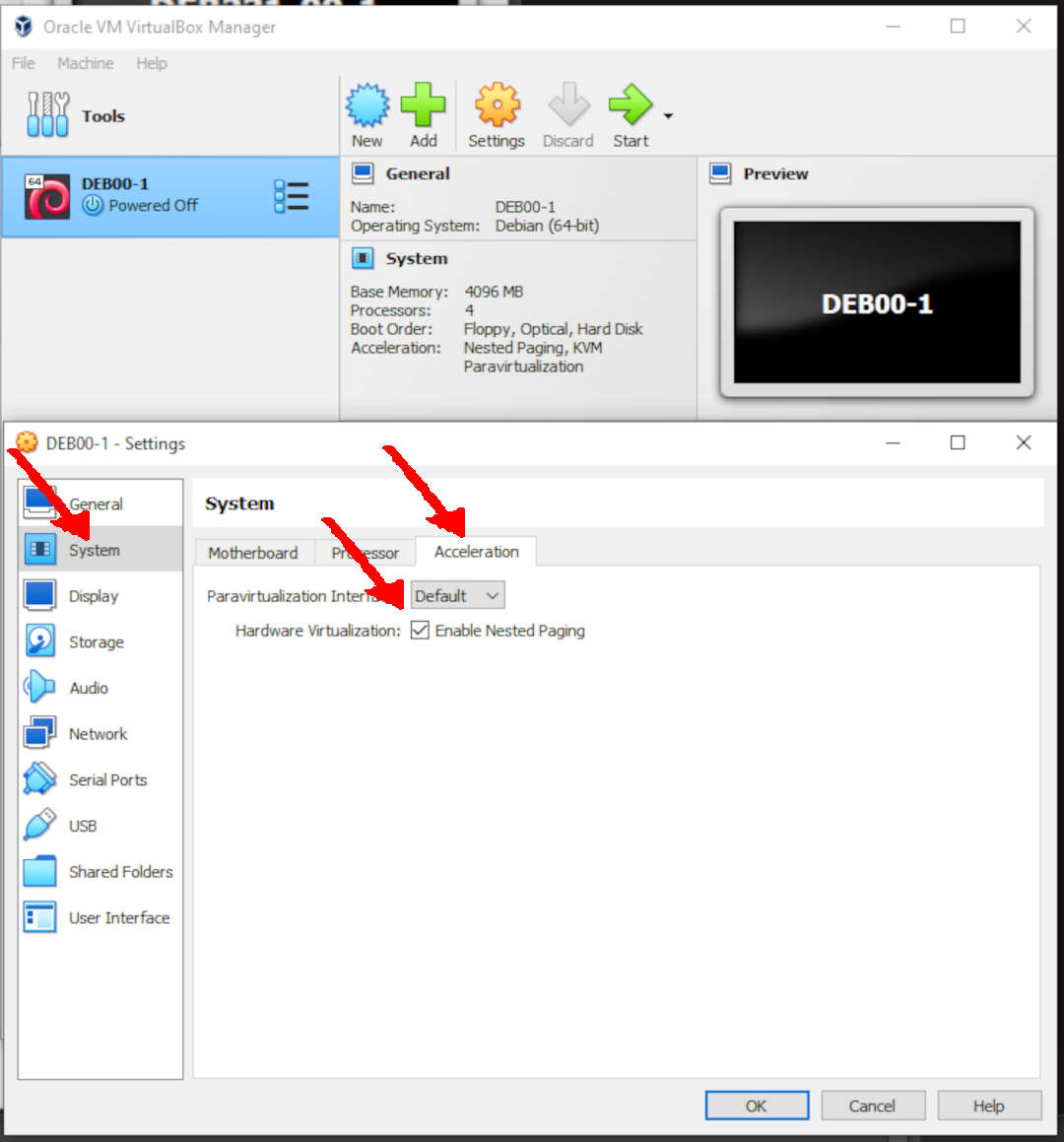
Display: Screen
- Video Memory: 16MB
- Monitor Count: 1
- Scale Factor: 150%
- Change “Scale Factor” to 100% if the console is too large, or 200% if it is too small.
- Graphics Controller: VMSVGA
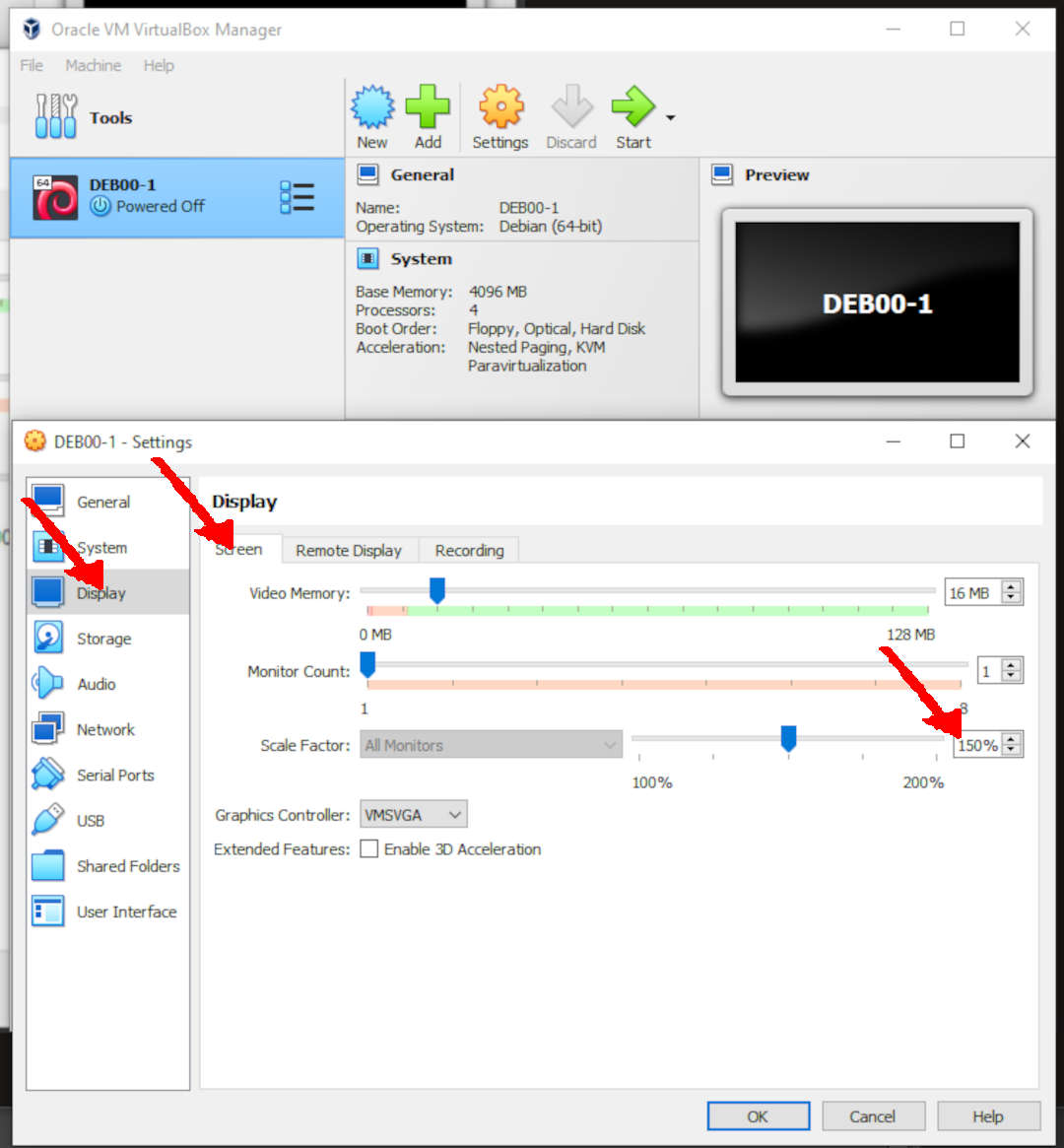
Storage: Devices: Controller: IDE
- REMOVE IDE CONTROLLER: (RIGHT CLICK)


Storage: Devices: Controller: SATA
- Add Optical Drive

- Add ISO Disk Image File
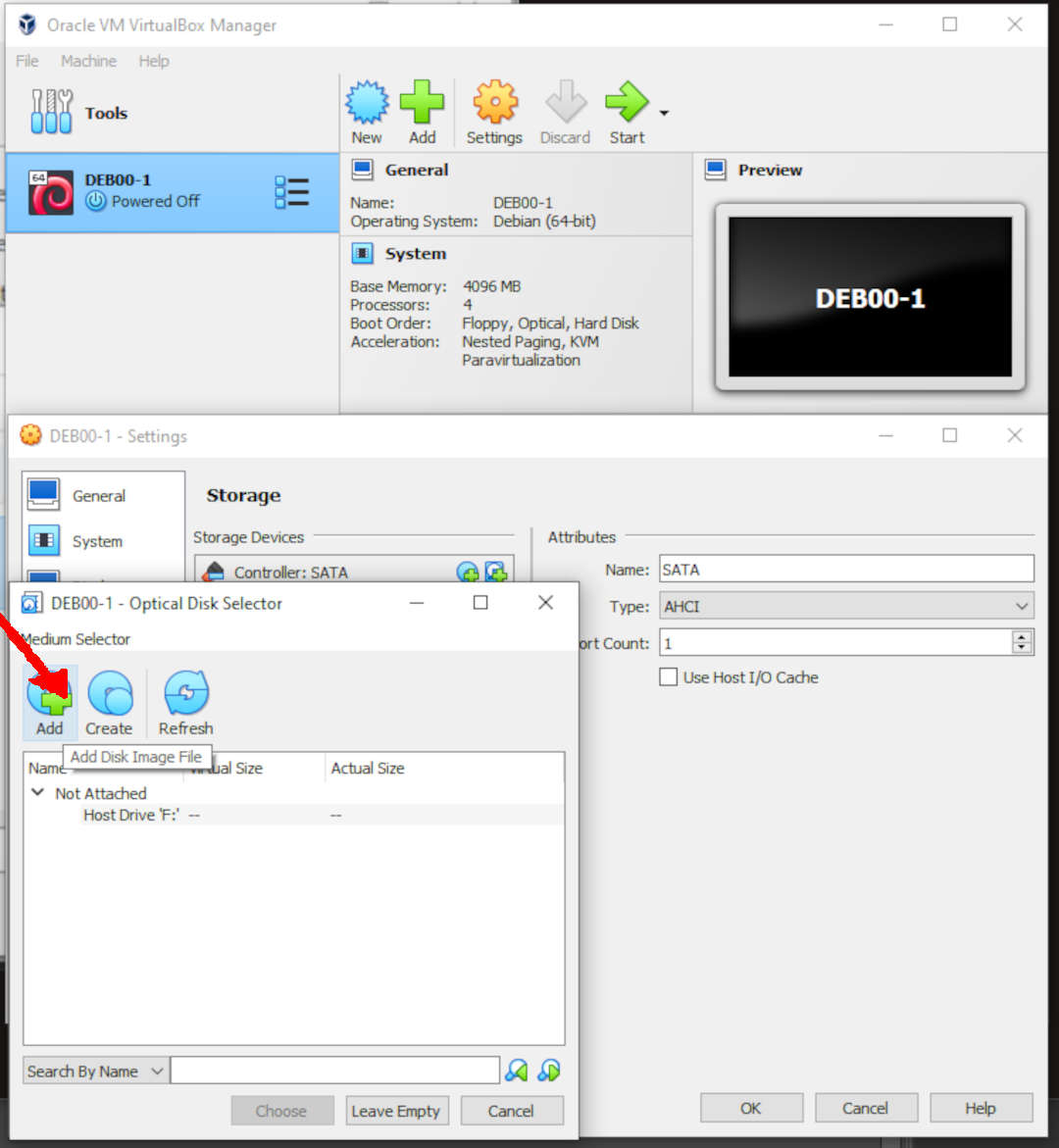
You can download the Debian ISO file from the official Debian website at the following URL:
https://cdimage.debian.org/debian-cd/current/amd64/iso-cd/
- The current ISO image is/was “debian-12.6.0-amd64-netinst.iso” — but this is subject to change.
- This example will use the previous version, “debian-12.0.0-amd64-netinst.iso”

- Choose ISO Image
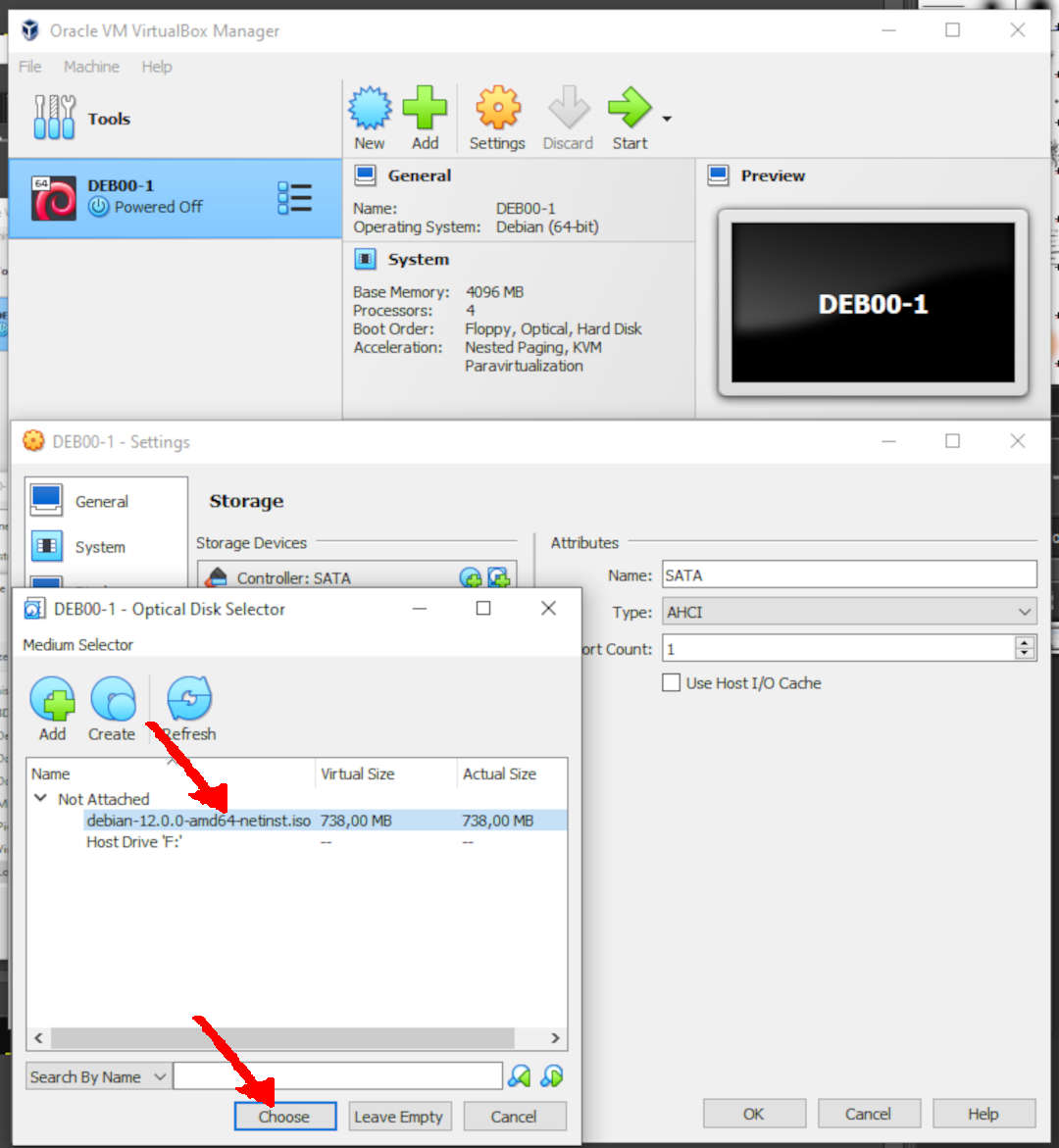
- Done

AUDIO
- Audio: OFF
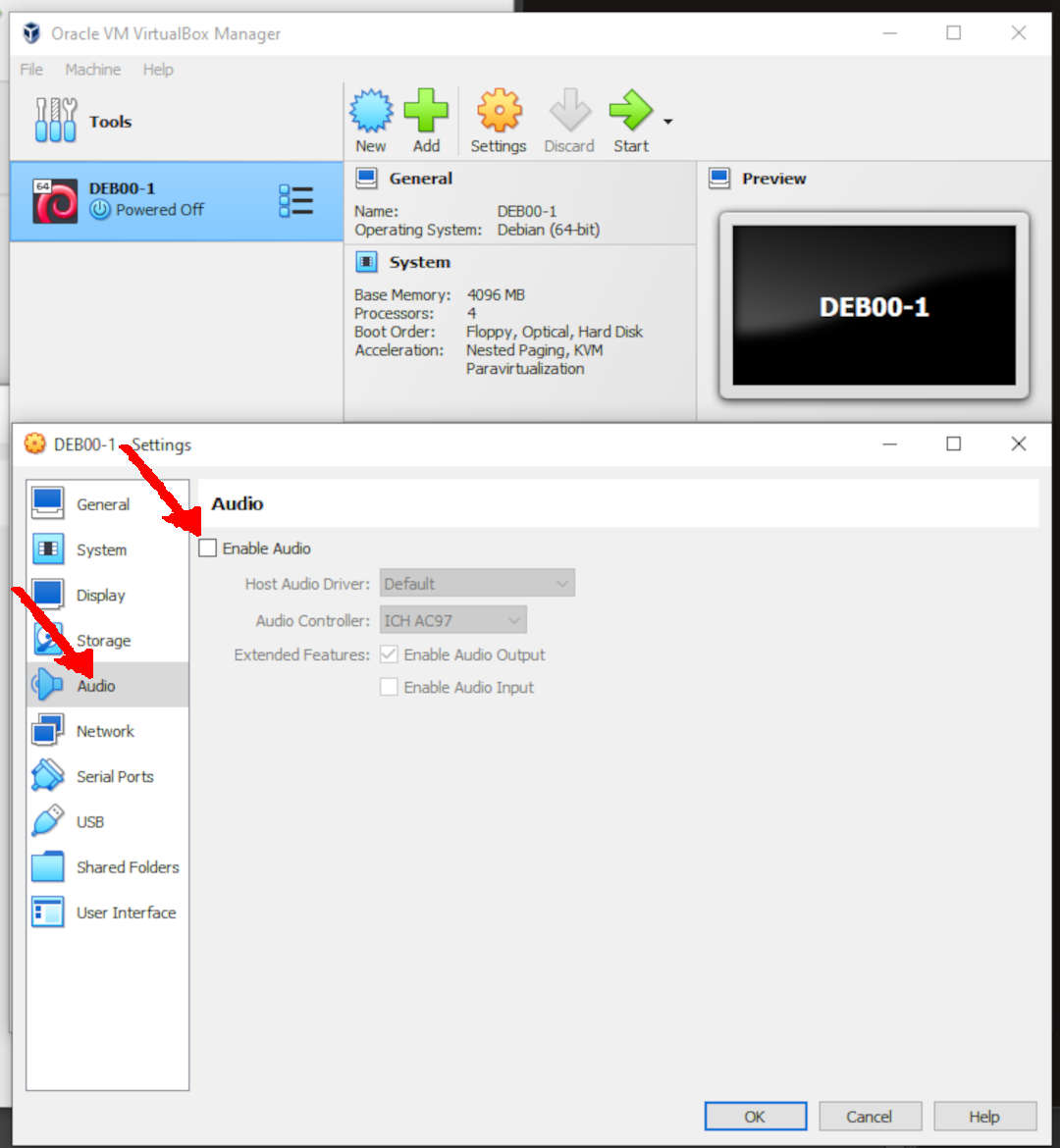
Network: Adapter 1
- Enable Network Adapter
- Attachet to: NAT
- Advanced:
- Adapter Type: Intel Pro/1000 MT Desktop
- Cable Connected: Checked
- Port Forwarding (CLICK)
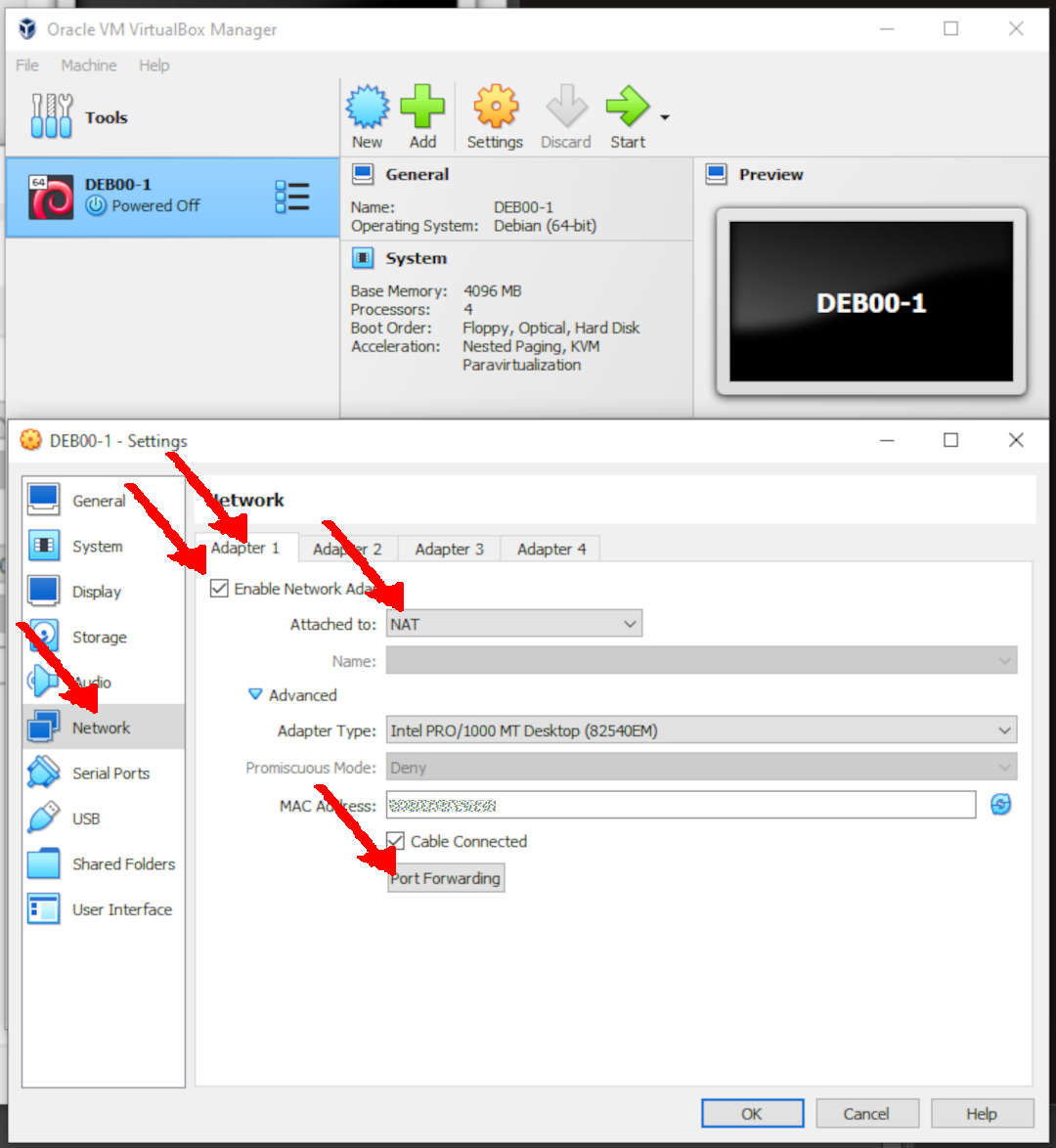
Port Forwarding Rules (SSH)
| Name | Protocol | Host IP | Host Port | Guest IP | Guest Port |
| Rule 1 | TCP | 127.0.0.1 | 6022 | 10.0.2.15 | 22 |

DONE (OK)
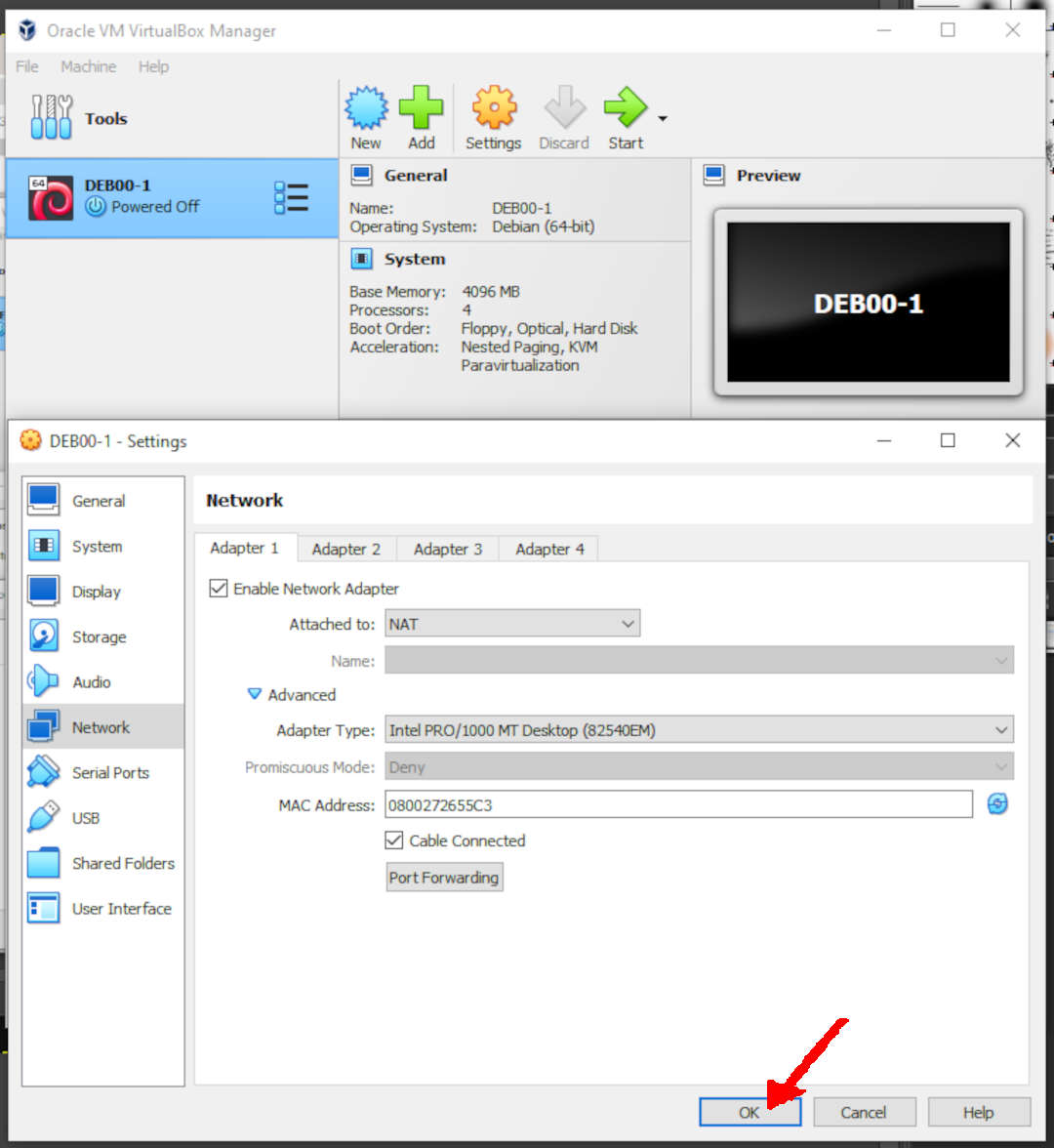
EXPORT: DEB00-1
- TOOLS (CLICK)
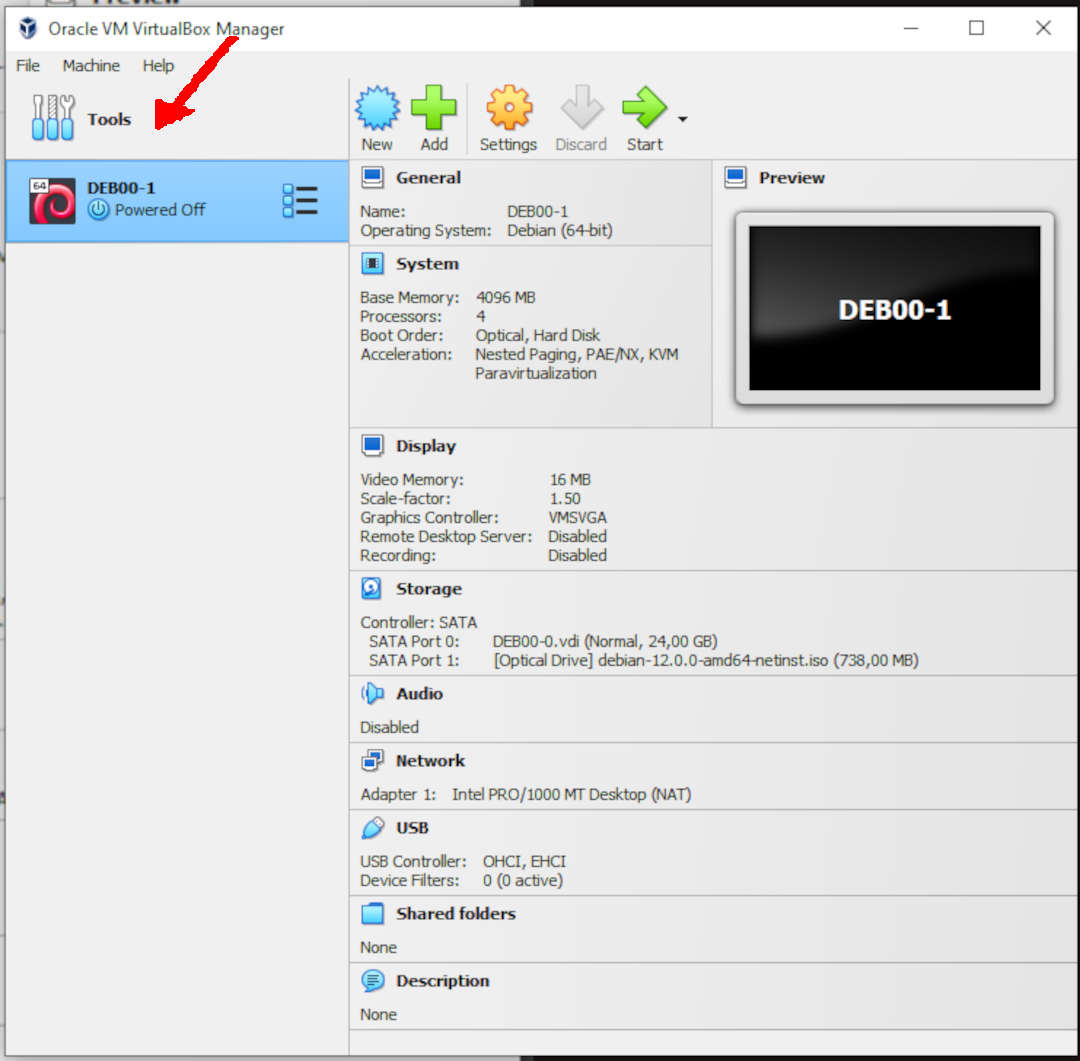
- If you are in “Guided Mode,” switch to “Expert Mode.”
- Virtual Machine: DEB00-1
